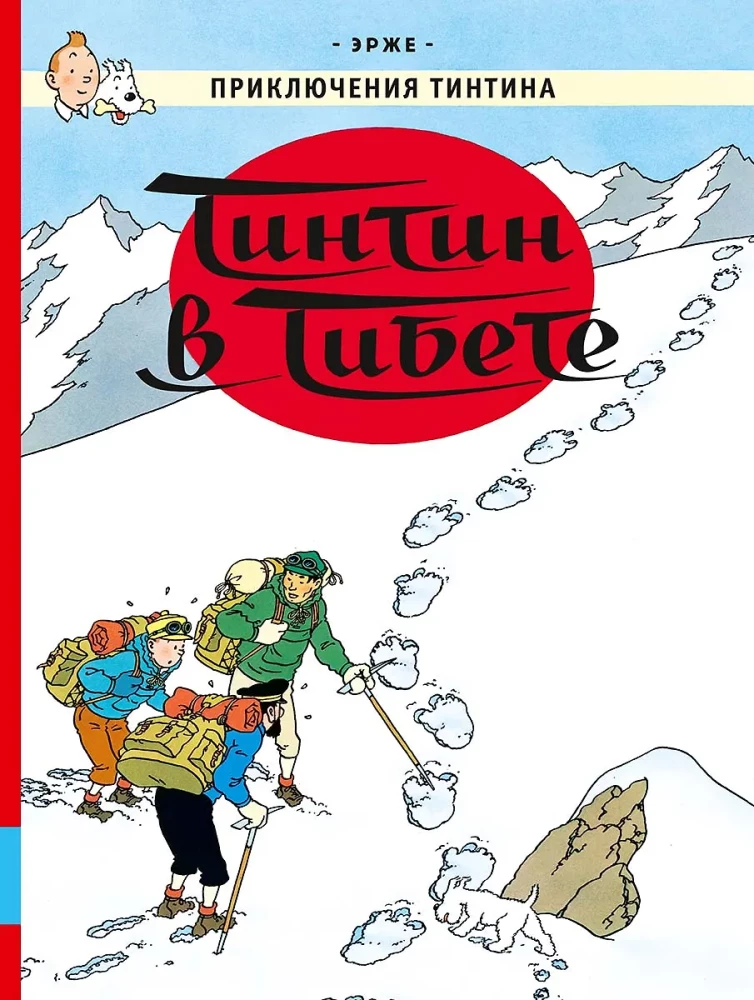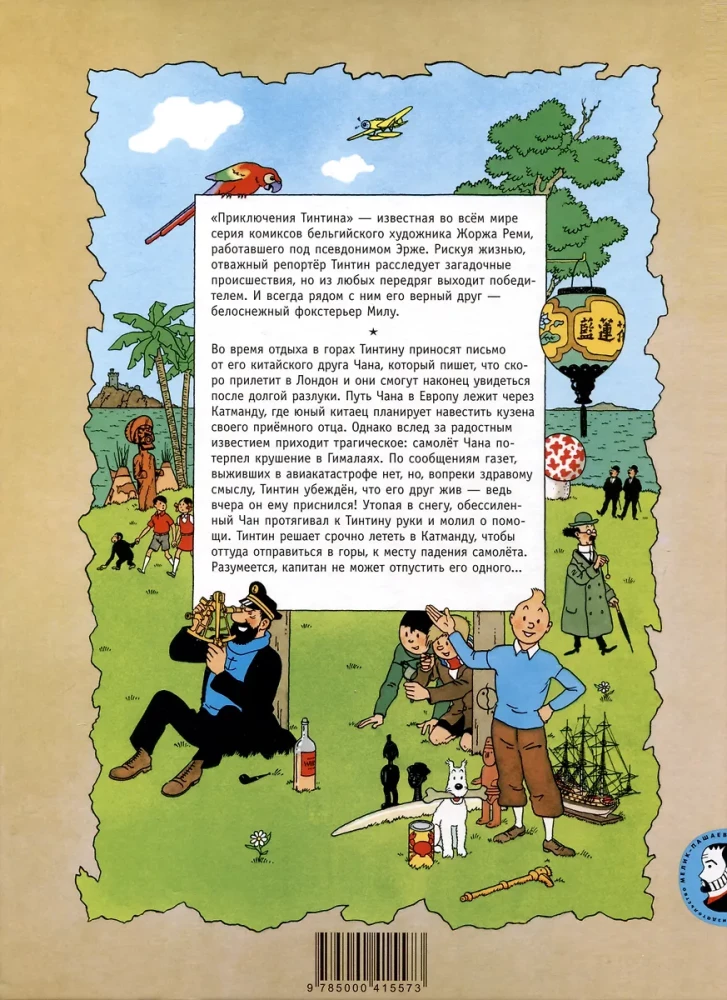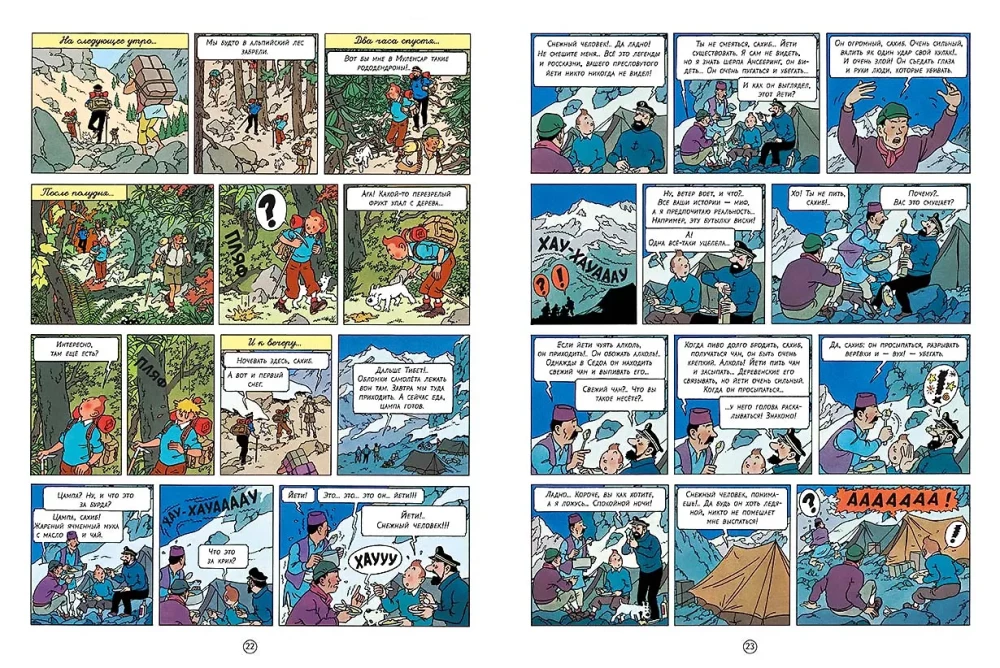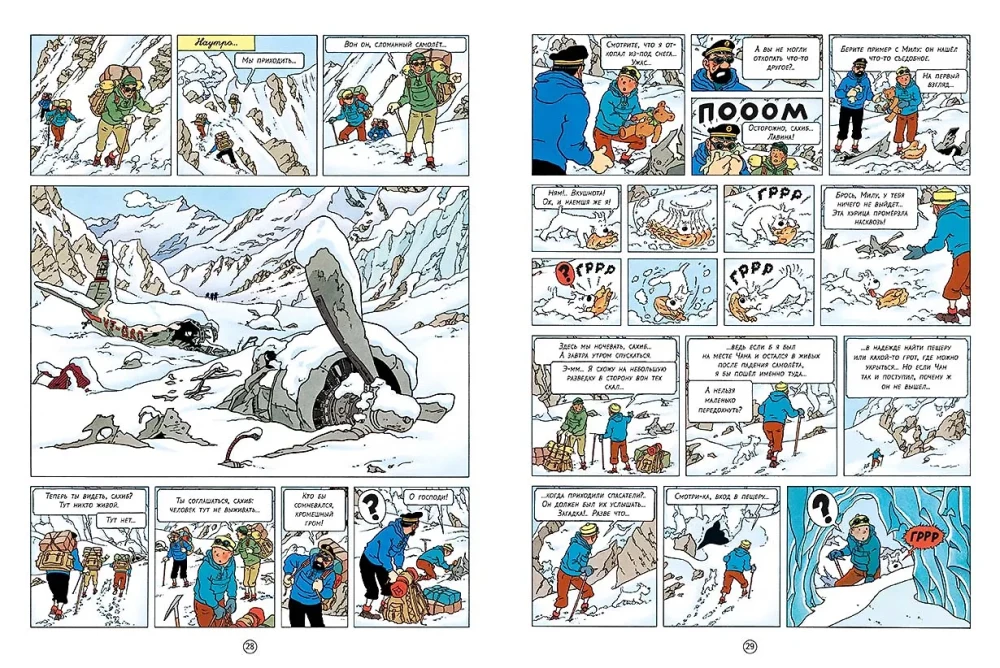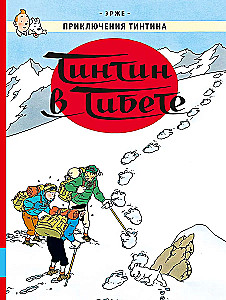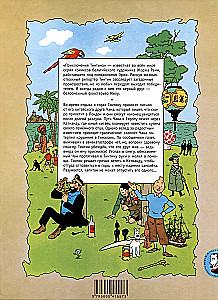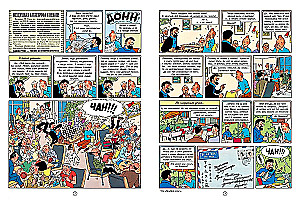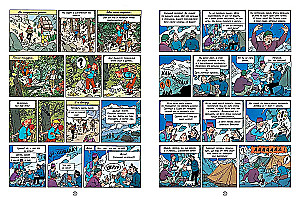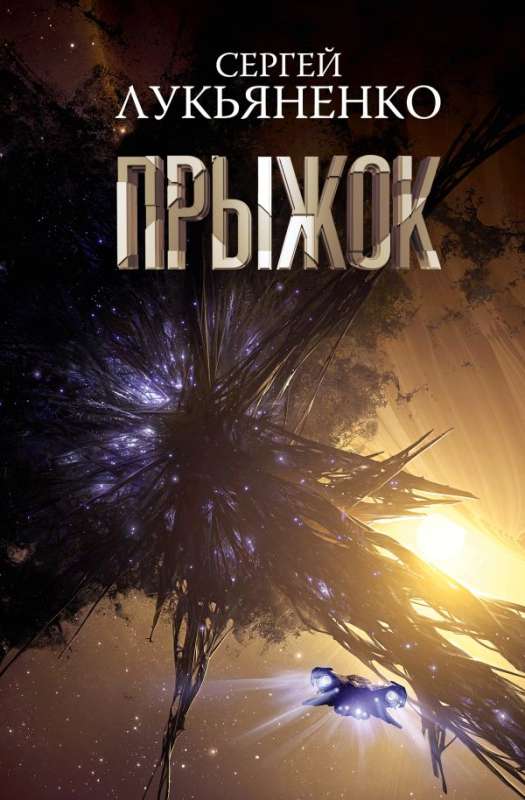Tintin in Tibet
While resting in the mountains, Tintin receives a letter from his Chinese friend Chang, who writes that he will soon arrive in London and they will finally be able to meet after a long separation. Chang's journey to Europe passes...
through Kathmandu, where the young Chinese man plans to visit his adoptive father's cousin. However, following this joyful news comes a tragedy: Chang's plane crashed in the Himalayas. According to newspaper reports, there were no survivors from the crash, but contrary to common sense, Tintin is convinced that his friend is alive - for he dreamt of him last night! Sinking in the snow, a powerless Chang reached out to Tintin and pleaded for help. Tintin decides to urgently fly to Kathmandu to then ascend to the crash site. Of course, Captain Haddock cannot let him go alone...
The journal publication of the anniversary, 20th volume of "The Adventures of Tintin" began in September 1958 and ended in November 1959 (the album version was released in 1960).
The work on the new story coincided for the author with a difficult period in his personal life that cost him a deep depression. Hergé was on the verge of a long-awaited but extremely painful decision about divorce. For him, a man who is extremely conservative and values reliability and permanence above all in relationships, the necessity of making such a decision seemed like a complete disaster. A safe haven for Hergé once again became creativity: it is no wonder, since he had long understood that Tintin was his best psychotherapist.
The initial idea for the 20th album came to the author at the end of the work on the previous volume ("Red Sea Sharks", 1958): it would be based on a criminal plot, with the main character being Nestor, the unchanging major-domo of the Moulinsart estate. However, the more Hergé thought about it, the less he liked it. At the same time, a completely different idea came to him, which he described in a few words: "Tibetan wisdom - lamas - snowman" (the note has been preserved in the archives - as well as the mention that about 20 years before, Hergé had already considered the idea of a "Tibetan" adventure). This seemed to the author to be quite fruitful. It remained to find a compelling reason to send his heroes to Tibet. The first to come to the rescue was Calculus: indeed, why wouldn't the restless professor want to find the snowman and thus uncover yet another scientific mystery? For this, he could very well go to Tibet - and, of course, his friends would follow. However, Hergé almost immediately dismissed this idea as completely unworkable: Calculus was too materialistic, too "mathematical" to be the main driver of the story, which the author envisioned not as a conventional adventure but rather as a kind of spiritual quest, an initiation. And it was then that Hergé remembered Chang, a character from "The Blue Lotus"! The seed of the idea germinated, and the rest was a matter of technique: meticulous preparatory work began.
The main sources of inspiration for Hergé were the works of Alexandra David-Néel (1868-1969), a French opera singer and tireless Tibetan explorer; the testimonies of the first Europeans to conquer the Himalayan peaks - Edmund Hillary (Everest) and Maurice Herzog (Annapurna), as well as the works of Bernard Heuvelmans (1916-2001), one of the pillars (and actual creator) of cryptozoology. Hergé deemed it necessary to meet personally with Herzog and Heuvelmans, and these meetings only strengthened the author's belief in the correctness of the chosen plot. By the way, both of them did not doubt the existence of the yeti: Herzog insisted that he had seen tracks in the snow that could not belong to any known living creature.
"Tintin in Tibet" stands apart in Hergé's work. Almost all Tintinologists consider this album the best. It is this work that finally cemented Hergé's status as one of the most significant authors of the 20th century, evidenced by the continuous stream of articles, studies, dissertations, philosophical treatises, parodies, and lampoons (how could we do without them!) dedicated to various aspects of the series even 40 years after the death of Georges Remi. "Tintin in Tibet" is an absolutely intimate, smooth album. To say the least, there is virtually no conflict in it; moreover - not a single negative character! The number of characters is kept to a minimum. The narrative centers on three - Tintin, the captain, and Snowy. For the first time in many years, we do not see Duponts on the pages. The appearances of Calculus can be counted on one hand. There are almost no references to previous albums and familiar characters loved by Hergé (except that the all-pervasive voice of Bianca Castafiore still carries the eternal "Aria with Jewels" across the surroundings). Nothing - just the blinding whiteness of the endless snows of Tibet, in which the researchers (considering the drastic changes in the author's personal life) see an allegory of a "clean slate", a new beginning. In other words, "Tintin in Tibet" is an initiation album, an album of immersion (primarily, into oneself). Did Captain Haddock, for instance, know that in him "lives a faith capable of moving mountains"?
Author: Эрже
Printhouse: Melik-Pashaev
Series: The Adventures of Tintin
Age restrictions: 12+
Year of publication: 2023
ISBN: 9785000415573
Number of pages: 64
Size: 297х223х10 mm
Cover type: hard
Weight: 530 g
ID: 1572044
5 January (Mo)
free
2 January (Fr)
€ 9.99
free from € 80.00
5 January (Mo)
free
2 January (Fr)
€ 9.99
free from € 80.00
